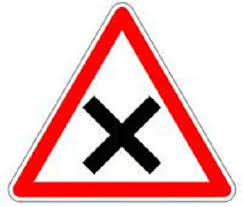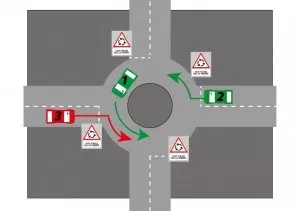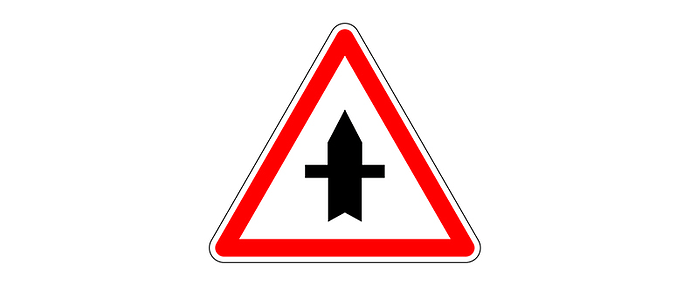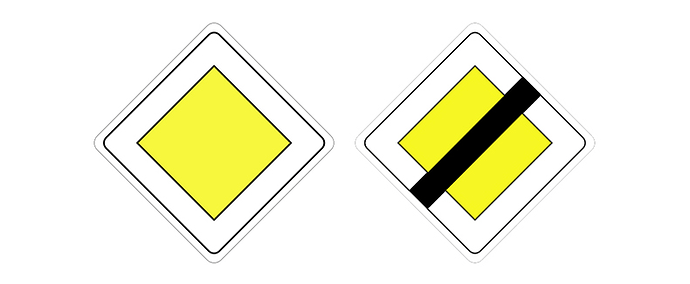That is how it should be, but I’m still not convinced, sorry. ![]()
A traffic-sign will definitely be there for a purpose, as you suggest, not always easily discernible to us mortals.
I have some experience of the difficulty encountered when one tries to get a legitimate traffic-sign put in place. Every argument under the sun is offered against the placement (or so it seems).
If it were to do with fund-raising we would have speed cameras and/or traffic lights in our Commune and rake in a small fortune for the government. 

Your logic, @graham, is as usual impeccable.
“There are never any accidents where the stop sign has been erected. I can’t see the point of it being there.”
“OK, that makes perfect sense. Let’s take it down. After all, it’ll save money having to maintain it. Not cheap, checking it’s straight and not obscured by overhanging leaves or tall nettles every few years.”
Screech, bang, crunch, wallop, dee-dah-dee-dah-dee-dah, scream, sob, dong dong dong dong…more sobs. Why-oh-Why etc.
" That junction’s an accident waiting to happen. There should be a sign there, I’ve been saying it for years! "
Our french neighbour saw the gendarmes, waited for abour seven seconds and they came after him saying that he had not stopped for nine seconds.
He asked them to show him the law which said that he had to stop for nine seconds and, of course, they could not.
I feel (or at least, felt) his pain
Do you not think that, maybe, these stop signs have been erected - in what would seem to some the most strange of places (wide open roads and junctions that you can see for miles) - because of the ancient priorite a droit rule?
Think about it…
Way back in the ‘olden times’, p a d was almost universal in France. All French drivers knew of it but any driver from outside France would be completely baffled at how a minor, entering, road can have priority over a main road.
Fast forward many years and now the French are phasing out p a d - albeit verrrry slowly - but there are still numerous drivers who adhere to this quaint tradition.
To enforce the priority on the main road, it seems to me that the Authorities have had to erect prominent stop signs with the law that you must stop sufficiently long enough for a regular baguette to be consumed (liberally coated with pate naturally!). This enforced stop, it is hoped, will wean the die-hard p a d drivers off their annoying habit…of sailing out onto a main road at 20kph just in front of an 18 wheeler bowling along at 80kph.
No amount of advertising by Renault about not breaking eggs in your 2CV is going to hide the resultant mess.
Just a theory…
Jambon-Beurre, surely! ![]()
Now that is a whole new discussion point - I still think it is a very daft system.
The same happened to a friend, it was considered to be a rolling start!
Wasn’t so daft in the day Mat.
The history of it as outlined by @carlmt makes good sense.
The same (or similar rule) exists also in parts of Germany. For example, a car approaching a junction where the car is on a slope; if it were to stop it might not be able to get going again (due ice) or a downward slope approaching a road the car might not be able to stop.
I fell foul of that rule in the early 80’s but luckily, it was only a minor shunt (no damage to either car) and the driver of the other car was a neighbour of our passenger so it was explained away (Englischer dumkopf!)
I have no issue with the priority of junctions being changed but it should be signed.
You must stop at a stop sign for at least .001 of a second, longer of a watching gendarme has sunglasses on.
Here is the code de la route R415-6 in its entirenty -
" A certaines intersections indiquées par une signalisation dite stop, tout conducteur doit marquer un temps d’arrêt à la limite de la chaussée abordée. Il doit ensuite céder le passage aux véhicules circulant sur l’autre ou les autres routes et ne s’y engager qu’après s’être assuré qu’il peut le faire sans danger.
Le fait, pour tout conducteur, de contrevenir aux dispositions du présent article est puni de l’amende prévue pour les contraventions de la quatrième classe.
Tout conducteur coupable de l’une des infractions prévues au présent article encourt également la peine complémentaire de suspension, pour une durée de trois ans au plus, du permis de conduire, cette suspension pouvant être limitée à la conduite en dehors de l’activité professionnelle.
Ces contraventions donnent lieu de plein droit à la réduction de quatre points du permis de conduire."
No time limit is mentioned so I feel sorry for anyone who has been nicked for complying with the law, but not for a ficticous length of time.
Ah, but in France it is @Mat_Davies.

This sign on minor roads signals that priority to the right exists at the upcoming junction
Junction ahead - your right of way
If you see this diamond sign with a white edge and yellow background (major routes) you’re entering a ‘priority road’ which means you have the right of the way instead, and vehicles coming in from the right must give way.
The same sign with a black stripe across signals the end of the priority road and a return to the ‘priorité à droite’ system.
Opinion not changed.
I think the thing some (most) Brits find it difficult to comprehend is that in France everyone is responsible (ie you don’t have to be told and in the absence of a sign to the contrary, assume priorité à droite is in force 
It’s amazing how many people see traffic law enforcement as a way of raising income rather than a necessity
Graham, does priorité à droite apply to mini-roundabouts?
Several times while progressing round the rond-point I’ve been cut across by a vehicle entering from my right. Driver gives me a dirty look.
I know roundabouts are often confused and confusing territory, and often it’s just down to common sense, rotating traffic has priority, and a dash of common decency. And signal directional intent in good time.
@Peter_Goble
The old fashioned roundabouts:

When you approach such a roundabout, you do have the priority and continue your route, go anti-clockwise to approach and use your chosen exit. However, whilst you are going around you must give way to the right. In the diagram above, you can see that the red car n°1 which is going around, must give way to the green car n°3. Concerning green n°2, it can go on to the roundabout as there is traffic arriving from the right.
Famous places such as the Arc de Triomphe in the centre of Paris is a good example. If you consider that the Arc de Triomphe is multi-lane, you can imagine the stress if you’re doing this for the first time.
The new roundabouts
Priority at a roundabout and giving way
Most modern day roundabouts give priority to the vehicle which is already on the roundabout. In the above diagram the green car n°1 has priority, no°2 can access the roundabout, whilst the red car n°3 must give way to the left. So here we can talk about a “priority to the left”.
And no more or you will be tooted from behind!
I, like many, see Traffic law enforcement as a necessity, but can also see that it is open to abuse as already mentioned in this thread.



